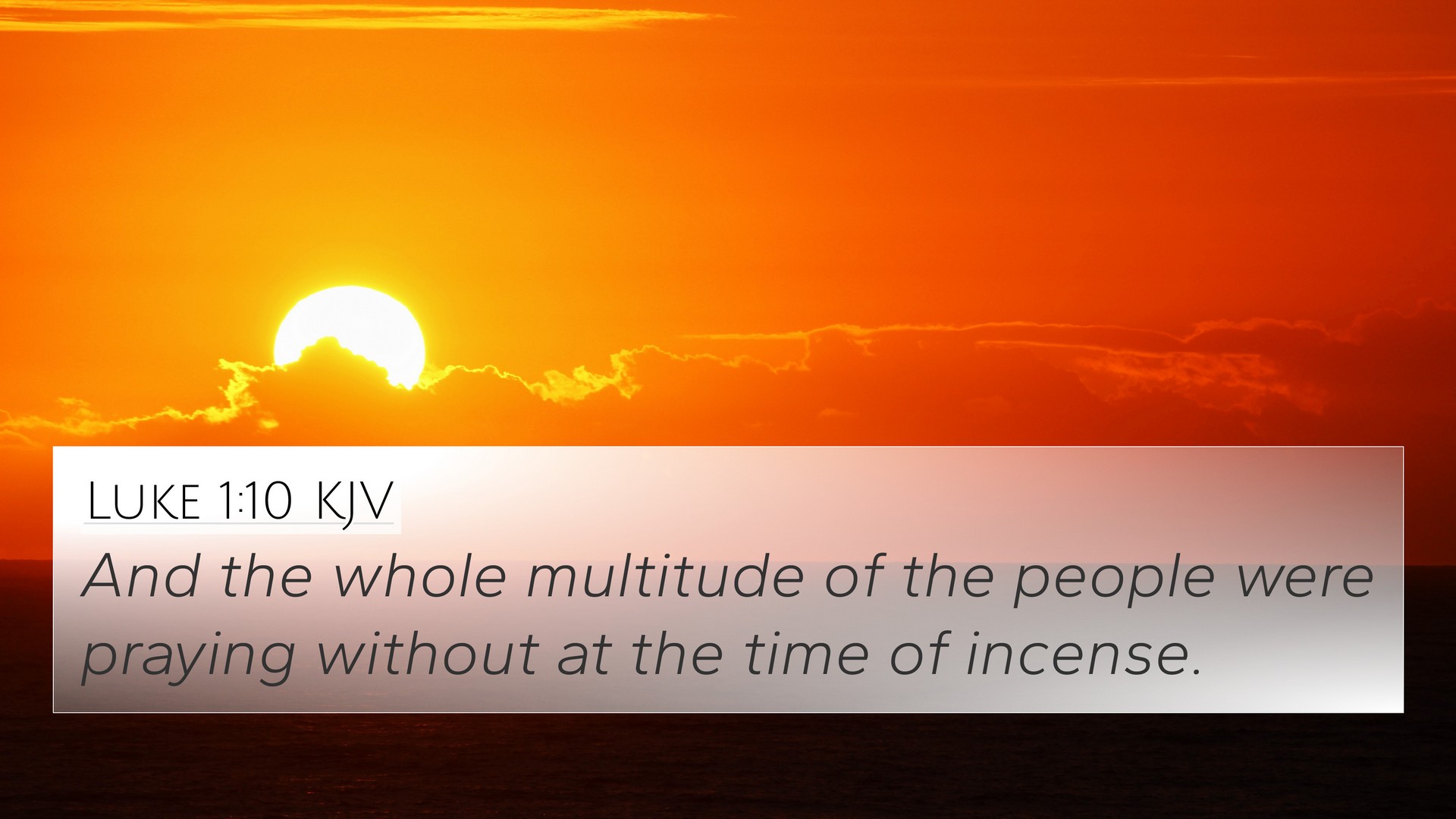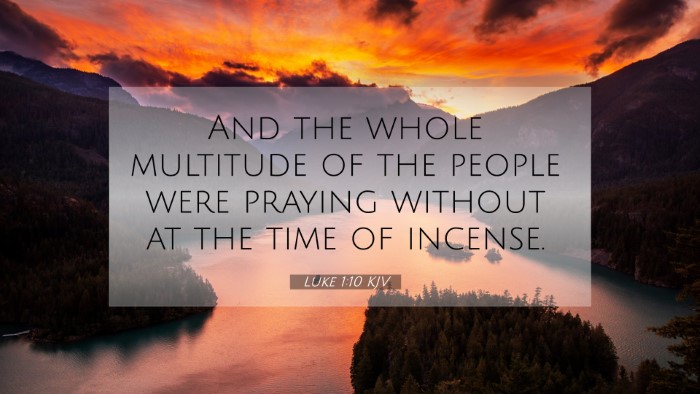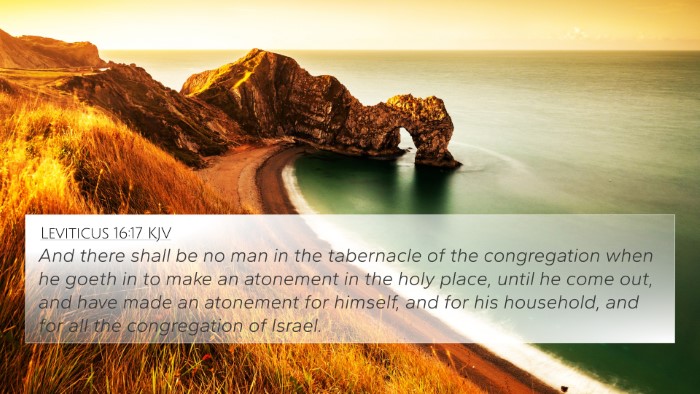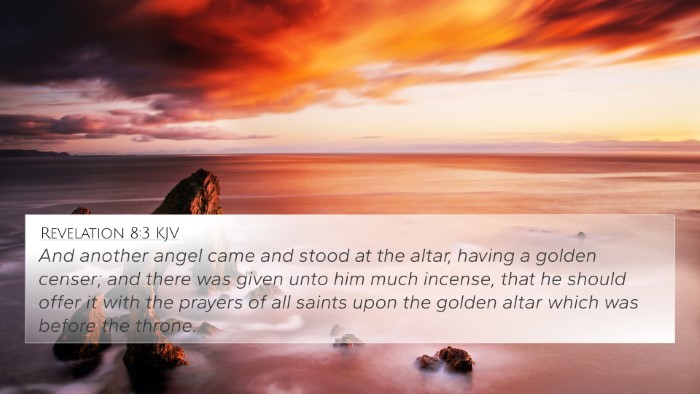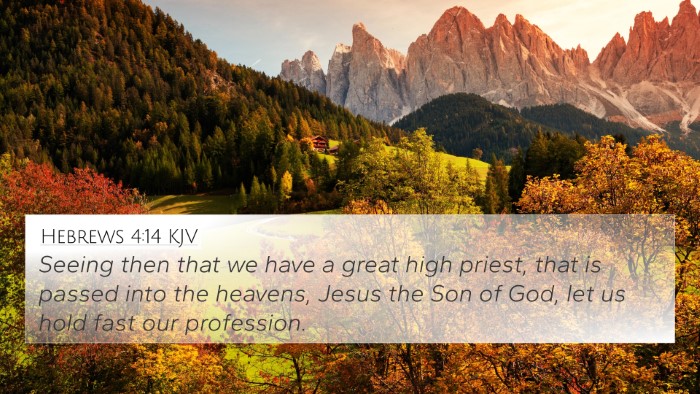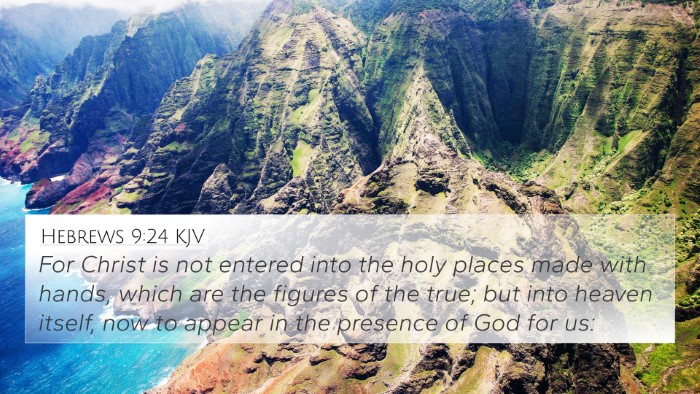Bible Verse Meaning: Luke 1:10
Verse: "And the whole multitude of the people were praying without at the time of incense."
Summary of Insights
Luke 1:10 captures a moment of prayer and divine communication, illustrating the spiritual fervor of the people during a significant religious ceremony. This verse invites readers to explore themes of prayer, the worship of God, and the importance of communal faith practices. Below is an exploration of the verse's meaning through insights from various public domain commentaries.
Insight from Commentaries
Matthew Henry's Commentary
Matthew Henry emphasizes the collective nature of the prayer and the expectation of divine interaction. The multitude praying signifies a pointed dedication to God, and the mention of incense symbolizes the prayers ascending to heaven. Henry notes that the fervent prayers of the people portray a longing for spiritual intervention.
Albert Barnes' Notes
Albert Barnes provides a contextual overview, indicating that the time of incense was crucial in temple worship. He points out that this was a sacred time when prayers were considered particularly effective. The people gathered to seek God's favor, demonstrating their faith and reliance on divine mercy, highlighting the unity in seeking blessings through prayer.
Adam Clarke's Commentary
Adam Clarke elaborates on the significance of incense in the Jewish tradition, symbolizing prayer and the sweetness of worship. He notes that the act of praying simultaneously by the populace reflects a collective hope and earnestness that God would hear their supplications. Clarke's insight reinforces the idea of community involvement in spiritual practices.
Bible Cross References
This verse draws connections with several other biblical passages that enhance its meaning:
- Psalm 141:2: "Let my prayer be set before You as incense, the lifting up of my hands as the evening sacrifice." – This verse underscores the importance of prayer represented as incense.
- Revelation 5:8: "And when He had taken the scroll, the four living creatures and the twenty-four elders fell down before the Lamb, each having a harp, and golden bowls full of incense, which are the prayers of the saints." – Here, prayers are again likened to incense, connecting worship across both testaments.
- Isaiah 56:7: "For My house shall be called a house of prayer for all nations." – This indicates the significance of prayer in God’s house, aligning with the setting of Luke 1:10.
- Hebrews 10:25: "Not forsaking the assembling of ourselves together, as is the manner of some, but exhorting one another." – This supports the idea of communal worship and prayer.
- Acts 2:42: "And they continued steadfastly in the apostles' doctrine and fellowship, in the breaking of bread, and in prayers." – This describes the early Church's response to prayer, similar to that of the multitude in Luke.
- 1 Timothy 2:1: "Therefore I exhort first of all that supplications, prayers, intercessions, and giving of thanks be made for all men." – This emphasizes the call to prayer, which resonates with the heartfelt prayers during the time of incense.
- James 5:16: "Confess your trespasses to one another, and pray for one another, that you may be healed." – Reinforces the power and communal aspect of prayer, akin to the prayer of the multitude.
Thematic Connections
By exploring the cross-references and insights from the commentaries, we can establish key themes:
- Prayer as Incense: The metaphor of prayers being like incense serves as a consistent theme across scripture.
- Community Worship: The gathering of the people to pray signifies the importance of corporate worship.
- Divine Intercession: The expectation of God's response highlights the connection between human petitions and divine actions.
Conclusion
Luke 1:10 serves as an important reminder of the power of collective prayer and the symbolism of incense within the context of worship. It encourages believers to participate actively in communal prayer practices and highlights the continuity of prayer throughout the scriptures. By studying this verse alongside its cross-references, individuals can deepen their understanding of biblical themes related to worship, prayer, and community invocation.
